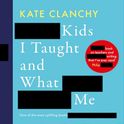As a collector and chronicler of the short, witty, philosophical sayings known as aphorisms, I’ve followed with fascination how this most ancient of literary forms is evolving as it meets the most modern short-form modes of communication—tweets, texts and TikTok videos. Indeed, one of the reasons I’ve published a new and expanded edition of my history of the aphorism, The World in a Phrase, is to connect current expressions of the genre with its roots in age-old wisdom writing traditions.
In some ways, the aphorism, with its emphasis on brevity, is perfectly suited to the digital age. But the aphorism has nothing to do with the hot take; the former encourages long-term reflection, the latter encourages knee-jerk reaction. Now, as generative AI programs such as ChatGPT promise to do all our writing and reading for us, it’s time to reaffirm the un-outsourceable creative thrill that comes from writing and reading aphorisms.
Consider this aphorism by Polish dissident Stanisław Jerzy Lec, who wrote under Soviet rule during the 1950s and 1960s:
No snowflake in an avalanche ever feels responsible.
This is a remarkable sentence. It is brief, just eight words. It is shorn of all context, offering no clue as to any referent outside the sentence itself. Taken literally, it is absurd, attributing moral agency to inanimate objects. In short, it is a non sequitur. Yet we instantly know what this sentence means, because our brains instinctively complete the storytelling process instigated by Lec’s vivid metaphor.
Lec’s sentence is a devastating critique of groupthink—in totalitarian regimes like the one Lec lived under, in which straying from the party line is forbidden; in democracies, when fear of repercussions for expressing dissent results in self-censorship; in workplaces, where a misplaced desire for consensus impairs critical thinking. We can all easily think of examples, in current events and in our own lives, where groupthink has led to disaster.
Lec’s aphorism is a novella in sentence form, featuring everything we expect from narrative: plot, setting, characters, theme and conflict. His phrase demonstrates how anything that can be accomplished in a poem, an essay, a short story, even an entire book can be accomplished in a single sentence, too—if that sentence is an aphorism.
ChatGPT can dash off accomplished villanelles and summarise dense tomes with a few casual keystrokes. But real writing and real reading are the opposite of that. They are effortful not effortless, participatory not passive. Great writing engages readers by making us creative accomplices in the storytelling. We take the writer’s prompts—description, imagery, allusion—and complete the story ourselves. To do this, we have access to some pretty large language models: our brains. Not as large as ChatGPT’s, of course, but large enough to imagine a novella from just eight words.
Aphorisms are the essence of great writing because they instigate this creative exchange between writer and reader with, per Mark Twain, “a minimum of sound to a maximum of sense”.
The aphorism is the coolest of what Marshall McLuhan described as “cool” media, which require more interpretative effort because they provide less information. (Cinema is a “hot” medium, since it provides lots of visual and auditory information.) Aphorisms demand the highest level of interpretative audience participation because information is minimal, just a handful of words, some puzzling imagery and zero context, as in Lec’s avalanche. The aphorist makes an assertion—something paradoxical, apposite, offensive or funny—then compels us to figure out what it means and whether we agree with it.
Outside of France, François-Auguste-René de Chateaubriand is probably best remembered for the dish that 18th-century gourmand Anthelme Brillat-Savarin named after him. Chateaubriand steak, served with mushrooms and béarnaise sauce, is still standard fare in many a Parisian bistro. As an aphorist, Chateaubriand had an uncanny ability to squeeze a lot of complexity into very few words:
Love decreases when it ceases to increase.
Chateaubriand’s aphorism is another novella in sentence form, this time a romance, the story of a torrid affair that endures and, as the relationship matures, the realisation that, as American magazine editor and aphorist Mignon McLaughlin phrased it in her take on the genre, “A successful marriage requires falling in love many times — always with the same person”.
There is a maxim popular among journalists: “Shorter is harder.” A 16-word caption is harder to write than a 1,600-word article, which is harder to write than a 16,000-word essay. The difficulty lies in the requirement to put so much in while leaving so much out. Pith is difficult. The higher the word count, the less need for the discipline of concision.
Concision has been the first law of the aphorism long before Twitter and other social media platforms imposed their character limits. Aphorisms have always been short, not because aphorists are pressed for time or lead fragmented lives, but because they deal in essences. Aphorisms are reductions, concentrating the flavor of a thought or experience by simmering away the excess. They are not, however, reductive. The thought or experience is all the more intense for being compressed. “An aphorism is the last link in a long chain of thought”, observed the late 19th–early 20th century Austrian aphorist Marie von Ebner-Eschenbach.
Making the connection to that last link requires an unspoken collaboration between writer and reader.
Chateaubriand’s contemporary, fellow countryman, and fellow aphorist Joseph Joubert could not abide imprecision of thought or expression. If he read an inelegant or clumsy passage in an otherwise good book, he ripped out the offending page. His goal was to distill thought into its most concentrated form: “If there is a man tormented by the accursed ambition to put a whole book in a page, a whole page in a sentence, and that sentence in one word, I am he.”
Joubert wrote at length about his ambition to put a whole book into a single word, but one of his sentences succinctly describes the reason writing and reading aphorisms is so intellectually thrilling:
To penetrate a thought and to produce a thought are almost the same action.
Our brains are pattern-making and pattern-detecting machines. So when we read a seeming non sequitur like “No snowflake in an avalanche ever feels responsible”, we immediately pick up the author’s links—without the author ever having to spell them out. To get to the meaning, writer and reader travel the same path, both require the same mental agility, and both experience the same excitement when they arrive at the aphorism’s heart. The reader follows back the chain of thought that the writer followed forward. The journey and destination are identical; only the direction is different.
The composition of an aphorism and the comprehension of it are almost the same action—which makes aphorisms the most intense, intimate expression we have of creative writing and reading.
The second edition of James Geary’s The World in a Phrase: A Brief History of the Aphorism (University of Chicago Press, £18) is available here












